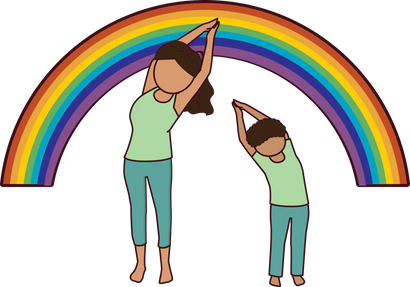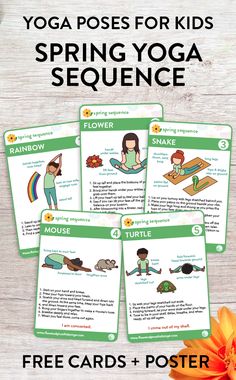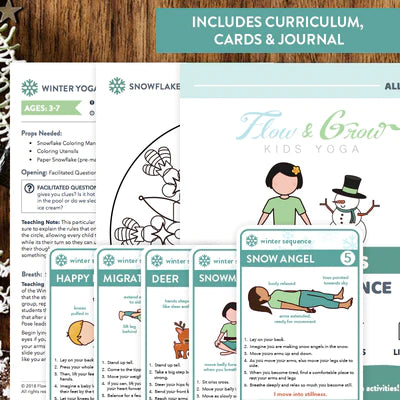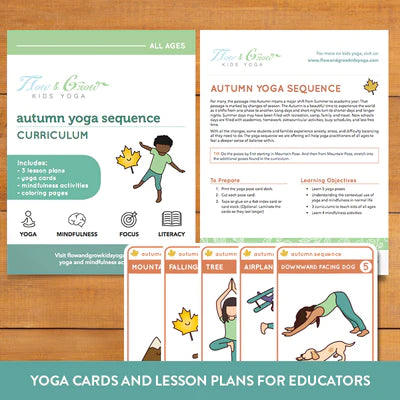Your Cart is Empty

#Selfcaresaturday: Take a few breaths and feel grateful
by Lara Hocheiser November 06, 2020 3 min read

At the risk of overgeneralizing, it feels pretty hard to be genuinely grateful for something and not feel just a little bit better -- whether saying it loud or just thinking of it. Try it now: think of something you’re grateful for and then notice how you feel. Notice if it impacts your next interaction with another person. These kinds of simple social-emotional skills are most effective when learned and internalized young; children who learn tools to feel better and to self-regulate do better in school and beyond, and are also poised for greater success and whole-person health for the rest of their lives.
Whatever our age, we all breathe! Breath is a simple, universal tool for mindfulness -- which often includes a focus on gratitude. Directing our minds towards something we’re grateful for while we consciously breathe can be profoundly calming and bring us joy. We can then find those benefits rippling out through our lives. For children, calm and joy can lead to better learning, more carefree play, and healthier development.
Try our 4-Step Gratitude Breath -- download our beautifully designed sheet here! The sheet gives instructions for applying this when you wake up, but you can adapt it to any time of day to find a smile and a bit more calm!

The science behind these embodied experiences is becoming clearer and more and more empirically validated.Greater Good in Action, out of University of California Berkeley, cites research demonstrating that adding gratitude to mindful breathing -- with clear benefits of its own -- “generate[s] positive feelings, which are good for our resilience, performance, and relationships.” Physically, gratitude combined with mindful breathing can lower the heart rate (signalling a decrease in the fight/flight/freeze stress response), as well as “impact areas of the brain related to emotion regulation and motivation (compared to feeling resentful).”
Parents, educators, and caregivers:
A key thing to note about mindfulness techniques for self-regulation is that they must be practiced in times of calm to lay the groundwork for them to work in times of distress. For instance, has a tantruming child ever been able to listen to your instructions to “take a deep breath with me so that you can calm down,” particularly if you haven’t practiced deep breathing with them when they’re calm? Most likely not. For that reason, as well as for the whole-person health and development benefits listed above, make gratitude breathing part of the daily routine of children in your life:
- Print out our free sheet detailing how to do gratitude breathing, and hang it up in the classroom, playroom, the child’s bedroom -- wherever they learn and play each day! It will stand as a tangible reminder to mindfully breathe and feel grateful.
- To start and end the day with good feelings and connection, practice gratitude breathing together upon waking up and going to bed. Teachers and caregivers can practice it together on meeting and saying goodbye to each other for the day.
- Whenever there is a difficult moment with the children in your care, but they are feeling well enough to listen to you and follow instructions, ask them to take a few gratitude breaths with you. Notice what happens!
What’s coming next week?
“Big M” mindfulness involves formalized meditation practices. While these practices can seem complex and inaccessible to some, with dedication and an open mind they can make a big difference in longer-term focus, mental clarity, calm, and joyfulness.
Want to get in on the #selfcaresaturday fun? Subscribe now!
Let us know how it’s going!Tag us @flowandgrowyoga on instagram and use #selfcaresaturday when you post pictures or videos practicing! Or reply here to tell us about your experiences! Photos are always welcome!
Want to learn more about teaching mindfulness & self-care to children?
The Foundations of Children’s Yoga
Integrating Mindfulness into the School Day: This course explores how to practice little m mindfulness. Whether you are working in a school or not, this workshop will help you create a structure around mindfulness, breathing, and self-regulation in your work with children. Take it live online, or catch the replay
Self-Care for Children: In this course, we explore a framework for self-care for children, while examining your own practices. Take it live, or catch the replay!
95-hour Children’s Yoga Teacher Training
Products we Recommend
How to Integrate Mindfulness into the School Day
Empowerment Cards and Lesson Plan
Love and Compassion for Teens and Tweens
Spread the love!Share this blog post on social media so others can join in on the fun & benefit from #selfcaresaturday!

Leave a comment
Comments will be approved before showing up.
Also in Kids Yoga Blog

Fun & Educational Yoga Stories for Preschoolers: Movement and Imagination
by Lara Hocheiser April 28, 2024 3 min read

Easter Yoga Poses for Kids: Joy and Wellness to the Holiday Season
by Lara Hocheiser April 04, 2024 4 min read

Multifaceted Health Benefits of Yoga for Kids
by Lara Hocheiser February 04, 2024 3 min read
Yoga for kids has a transformative power! Holistic practices can enhance mental health, concentration, and physical fitness.
Yamas and Niyamas: Successful Relationships with Self & Others (tweens and teens)
digital-resourceskids-yoga-resourceslesson-plansmiddle-high-school-yoga-mindfulnessmindfulnesspricey-content
Yamas and Niyamas: Successful Relationships with Self & Others (tweens and teens)
2 reviews
5.0 / 5.0
(2) 2 total reviews
$55.00
Yamas and Niyamas: Successful Relationships with Self & Others (tweens and teens)
2 reviews
5.0 / 5.0
(2) 2 total reviews
$55.00
Ultimate Kids Year of Yoga Bundle
bundlesdigital-resourcesearly-childhood-yoga-mindfulnesselementary-yoga-mindfulnesskids-yoga-resourcesmiddle-high-school-yoga-mindfulnesspricey-contentseasonal-yogayoga-cards
Ultimate Kids Year of Yoga Bundle
5 reviews
5.0 / 5.0
(5) 5 total reviews
$45.00
Ultimate Kids Year of Yoga Bundle
5 reviews
5.0 / 5.0
(5) 5 total reviews
$45.00
Kid’s Sun Salutation Yoga Cards
digital-resourcesearly-childhood-yoga-mindfulnesselementary-yoga-mindfulnesskids-yoga-resourcesliteracyunder-15yoga-cards
Kid’s Sun Salutation Yoga Cards
3 reviews
4.33 / 5.0
(3) 3 total reviews
$12.95
Kid’s Sun Salutation Yoga Cards
3 reviews
4.33 / 5.0
(3) 3 total reviews
$12.95















